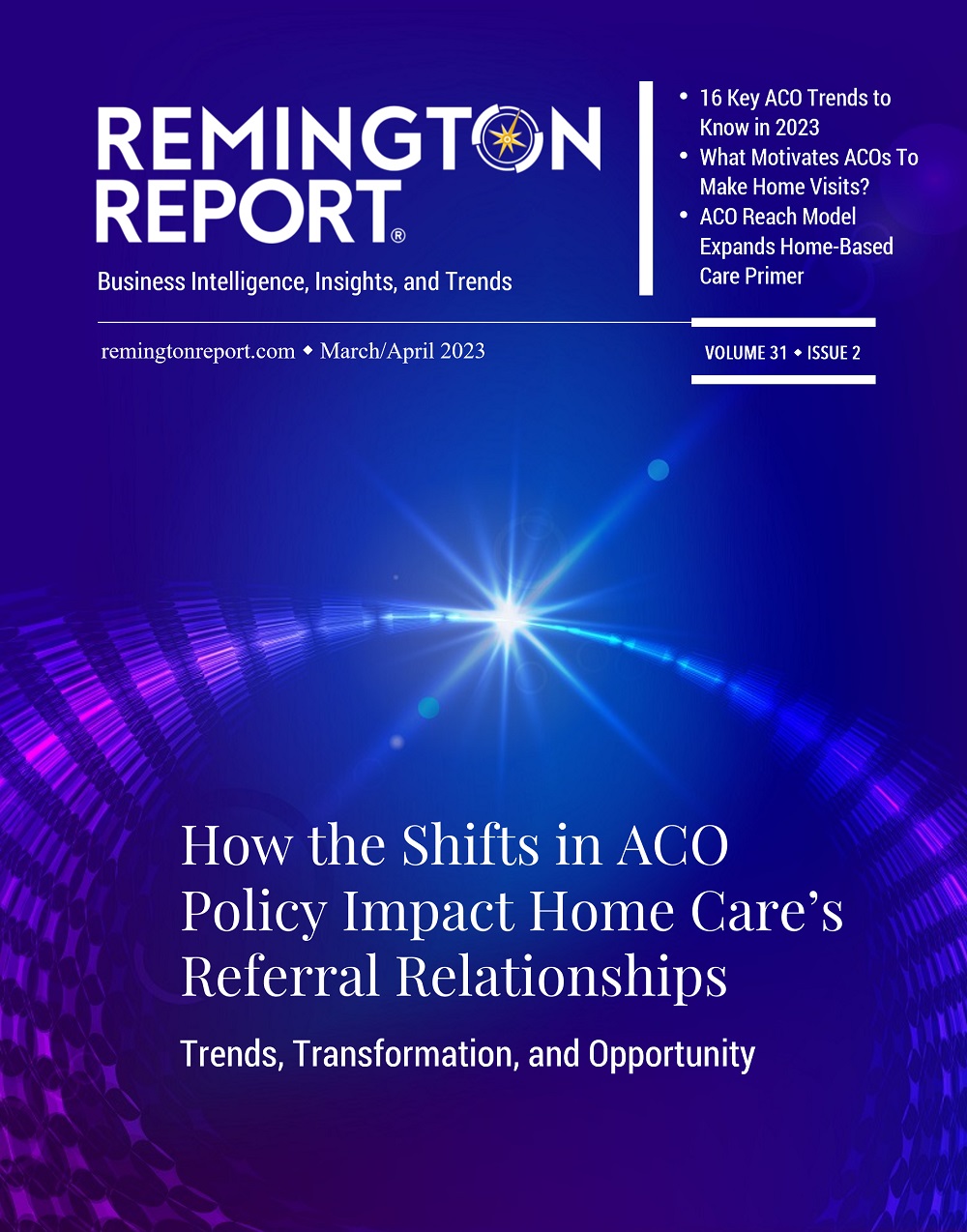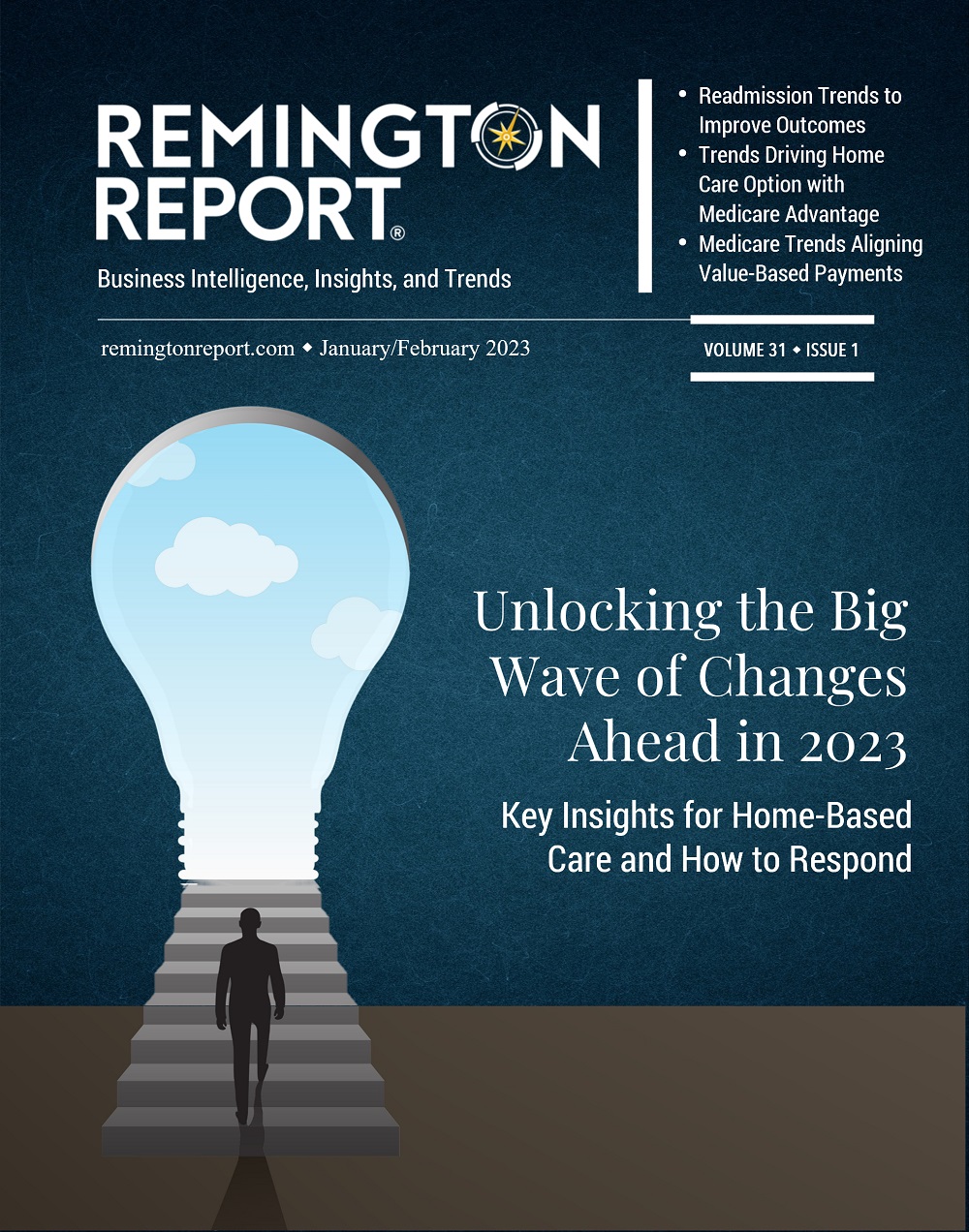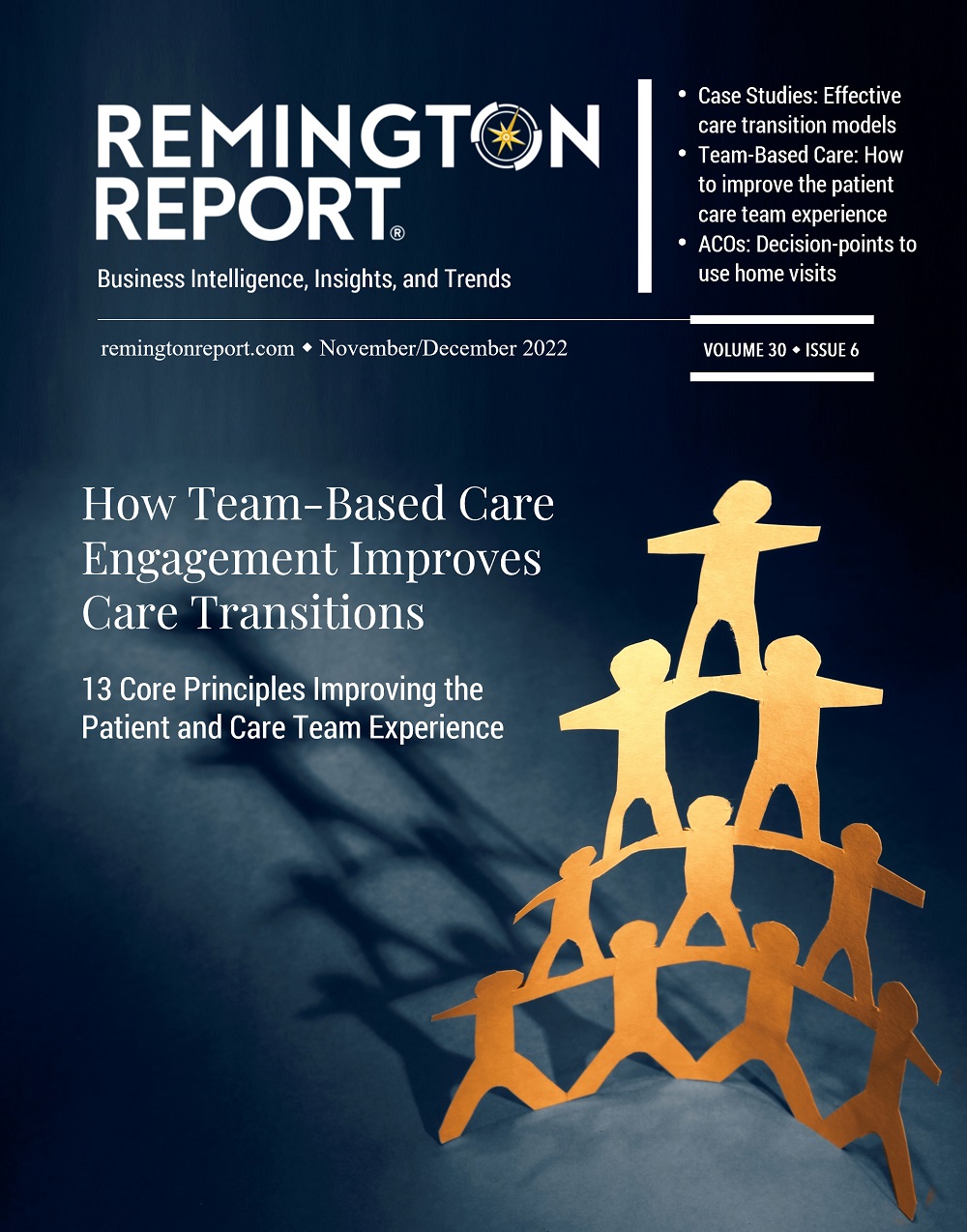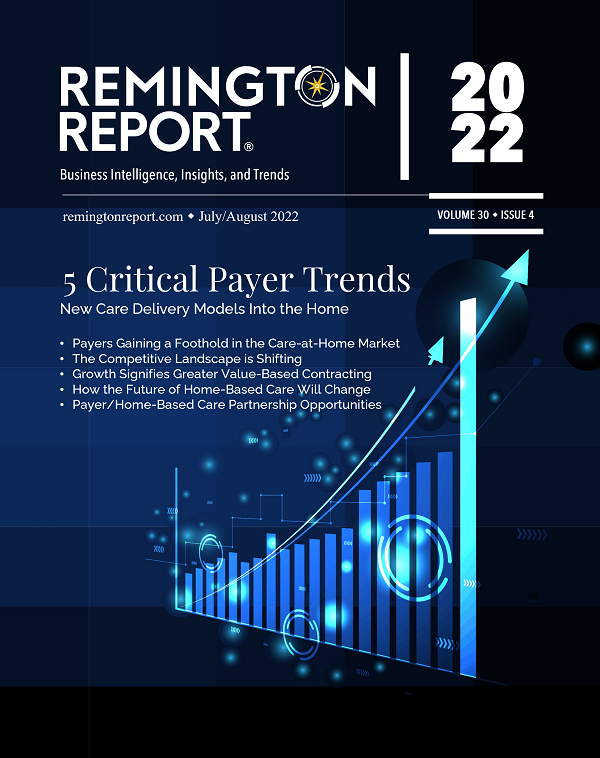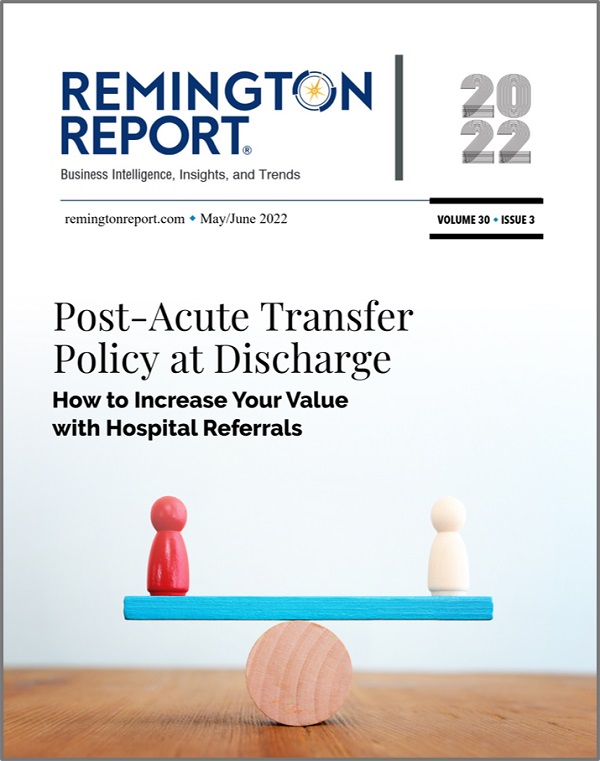In 2017, about 3.4 million Medicare beneficiaries received home care, and the program spent $17.7 billion on home health services. Medicare spending for home healthcare more than doubled between 2001 and 2017, and this care accounted for about 3 percent of Medicare fee-for-service (FFS) spending in 2016.
Revision of Home Health Payments in 2020
The Bipartisan Budget Act of 2018 requires CMS to implement two major changes to the home health prospective payment system (PPS) in 2020: a new 30-day unit of payment in place of the current 60-day unit of payment and the elimination of the number of therapy visits as a factor in the payment system. These changes follow several years of analysis by the MedPAC Commission and CMS to identify reforms to home health payment. The elimination of the therapy thresholds is consistent with a recommendation the Commission first made in 2011 (Medicare Payment Advisory Commission 2011).
The current payment system has a series of nine payment thresholds that increase payment as the number of therapy visits in an episode increases; in effect, providing more therapy visits increases payments. Such an adjustment encourages agencies to consider financial incentives when providing therapy services. The Commission has noted that home health agencies (HHAs) appear to adjust their services to maximize financial results under these thresholds (Medicare Payment Advisory Commission 2011). An investigation by the U.S. Senate Committee on Finance found that many agencies were targeting therapy services based on financial incentives and called for Medicare to move away from using therapy as a payment factor (U.S. Senate Committee on Finance 2011). Eliminating the thresholds in 2020 will mitigate the adverse incentives in the home health PPS.
PDGM
CMS plans to implement a new case-mix system, the Patient-Driven Groupings Model (PDGM), in 2020. The PDGM categorizes episodes into 432 payment groups based on the following characteristics:
- Episode timing—Services in the first 30 days of a spell of home health would be classified as “early,” while services in the subsequent 30-day period would be classified as “late.” For example, if a beneficiary had two consecutive 60-day payment episodes under the current system, the first 30-day period would be classified as early, while the three subsequent 30-day periods would be classified as late 30-day periods. Though the unit of payment will move to a 30-day episode, beneficiaries receiving home healthcare would continue to be assessed for payment purposes at the beginning of care and at the beginning of each subsequent 60-day period of service.
- Referral source—Cases would be categorized based on the services received before the beginning of the episode: prior hospitalization or institutional post-acute care on the one hand, or admission from the community on the other.
- Clinical category—The new system would create 12 clinical categories based on patients’ reported conditions or treatments: need for musculoskeletal rehabilitation; neuro/stroke rehabilitation; wound care; behavioral healthcare; complex care; and medication management, teaching, and assessment.
- Functional/cognitive level—Similar to the existing system, the PDGM would classify patients’ cognitive and physical functioning using information from the Outcomes Assessment Information Set.
- Presence of comorbidities— The PDGM will adjust payment for commonly occurring comorbidities in home healthcare. There would be a three-tiered adjustment for selected comorbidities.
PDGM Analysis by Agency Type
CMS analyzed the PDGM’s likely impact in the 2019 home health payment rule, finding that, in general, funds would be redistributed from HHAs that provide more therapy to those that provide relatively more nursing.
Specifically:
- Payments in 2020 would increase by 2.9 percent for non-profit agencies and 3.9 percent for facility- based HHAs.
- Payments would fall by 1.2 percent for freestanding agencies and fall by 2.2 percent for for-profit HHAs.
- HHAs in urban areas would see a 0.6 percent payment decrease, while those in rural areas would see a 4.0 percent increase.
- Payments would rise for smaller providers and fall for larger providers. For example, payments would increase by 1.9 percent for the 2,841 HHAs with less than 100 episodes in annual volume and would drop 0.2 percent for larger HHAs with more than a 1,000 episodes a year.
Is Medicare’s Home Health Value-Based Purchasing Program Working?
In 2017, Medicare initiated a value-based purchasing (VBP) model for home healthcare. The model is designed to test whether HHAs in nine states (Arizona, Florida, Iowa, Maryland, Massachusetts, Nebraska, North Carolina, Tennessee, and Washington) improve or maintain high quality when they are subject to a VBP incentive. Under the demonstration, HHAs with higher performance receive bonuses, while those with lower scores receive penalties. HHA performance is evaluated against separate improvement and attainment scores, with payment tied to the higher of these two scores. The first payment adjustment was implemented January 1, 2018.
The program determines quality through a composite of 20 measures of process, outcomes, and patient satisfaction. In the first year, performance in 2016 was compared with the prior year. The scores are combined into a composite Total Performance Score (TPS), following an approach similar to that used in the hospital VBP program.
A CMS-contracted report concluded that the impact of the VBP program on quality was mixed in 2017, the first year payments were adjusted under the program. This analysis compared the TPS values for patients served by HHAs in the nine VBP test states with a comparison group of home health patients from other states. The analysis found that TPS values increased in both VBP states and the comparison states, but that the increase in the average TPS value was 7.4 percent greater in the VBP states.
The report made a caveat with reference to this result, noting that the higher annual increase for the VBP states was principally attributable to better performance on several process and outcome measures based on the Outcomes Assessment Information Set (OASIS), which are reported by HHAs and not independently verified. The VBP report also noted that several HHAs subject to VBP had revised patient assessment practices in response to the program and that changes in these practices could have contributed to the higher rates of improvement on the OASIS-based measures.
Performance on other measures, which relied on data from Medicare claims or beneficiary surveys, was mixed. Spending on and utilization of skilled nursing facilities declined slightly, but emergency department use increased. There was no statistically significant difference between VBP states and non-VBP states in rates of hospitalization or spending. The analysis also found no statistically meaningful differences between VBP states and non-VBP states for the rates of patient satisfaction collected through the Home Health Consumer Assessment of Healthcare Providers.
Source: MedPAC

Lisa Remington is widely recognized as one of the foremost futurists in the home care industry, focusing on healthcare trends and disruptive innovation. She serves as the president and publisher of the Remington Report magazine and is also the President of Remington’s Think Tank Strategy Institute. Lisa provides strategic advice and education to over 10,000 organizations, assisting them in developing transformative strategies for growth and their future implications. She closely monitors complex trends and forces of change to develop effective strategic approaches.



